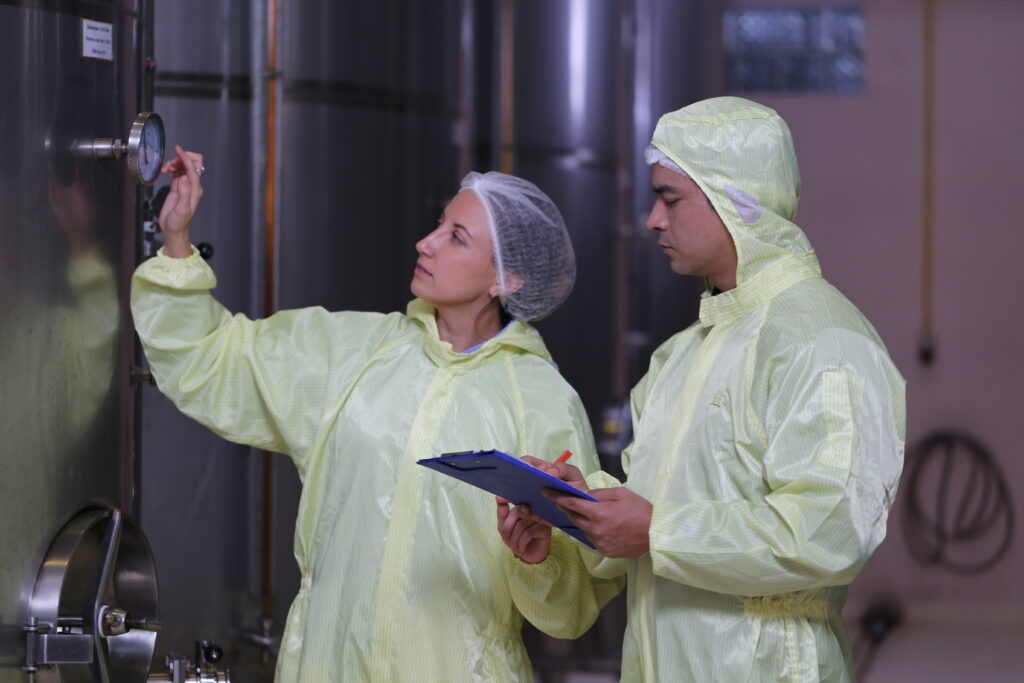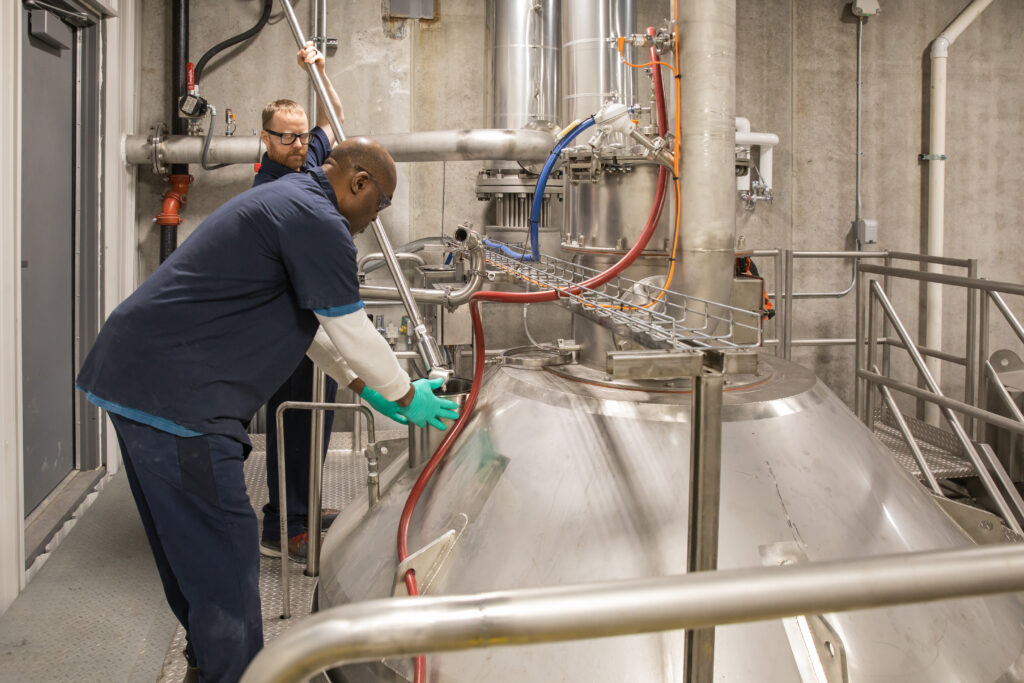Keep Up to Date with MDG
MDG News and Updates

Planning Ahead: Start Early with Your Custom Fermentation Partner
At MDG, we are dedicated to helping you scale up your bacterial ingredients efficiently and economically so you can find success in your microbial product lines. The process of formulating those product lines can include quite a few steps. You need to identify your desired bacterial strain, grow that strain, and manufacture it at the scale necessary for sales to begin. In order to meet your deadlines, you’ll want to contact and form a relationship with your custom fermentation partner early. We’ve expanded our growing capabilities—keep reading to explore a few things to consider before reserving space. How Long Will It Take to Grow? Factors to Consider A variety of factors can impact the growing and manufacturing timeline of your strain. These include: Species: While we pride ourselves on being Bacillus experts, we also grow non-Bacillus bacterial strains for our customers. Some of these strains can be harder to grow than others, meaning our microbiologists and production experts may need some extra time to determine the best growth and scale-up strategy. Media: At MDG, we test your strain on multiple media to find the best environment for growth. This also allows us to dedicate time to accommodate specific media requests […]

The Benefits of MDG’s Microbial Ingredients: A Guide for Distributors
As a manufacturer of industrial and institutional cleaning solutions, you have a lot to think about when creating your product lines. Using components that clean effectively, meet your customers’ needs, and drive your success in the marketplace is important, and microbial ingredients can be a great way to achieve those goals. However, there are a lot of options you can choose from when formulating, including traditionally used chemicals. So why choose microbial ingredients above the rest? Reason #1: Environmental Friendliness The bacteria in microbial ingredients work to reduce odors and solids buildup by using organic material and odor-causing compounds that are present in the system as a food source. By taking in nutrients essential for their growth, the bacteria can multiply, increasing treatment effectiveness. Microbial ingredients also work with a system’s native bacteria to mitigate buildup and odor issues. They don’t overtake a system; instead, these ingredients enhance the environment and encourage the growth of beneficial organisms to continue the effects of treatment after the initial application. Chemical cleaners, however, do not enrich a system’s microbial population like bacterial ingredients do. They sometimes reduce the population of beneficial bacteria as well as the odor-causing bacteria they’re meant to target, which […]

MDG’s Wastewater Team Attends WEFTEC 2024
We are excited to announce our attendance at WEFTEC 2024, the largest annual water quality event in North America, taking place October 5–9 in New Orleans. As leaders in bioaugmentation with Bacillus, we will be showcasing our innovative solutions designed to improve sludge digestion and H2S gas mitigation in wastewater lagoons and collection systems. Come find us on the exhibition floor in Booth #2854. About the Event WEFTEC, organized by the Water Environment Federation, is an annual technical exhibition and conference focused on water quality. The combined conference and exhibition features over 800 exhibitors and 120+ technical sessions, providing ample opportunities for water professionals from around the globe to network, share ideas, and discuss recent innovations in the water sector. Our Role at WEFTEC With our commitment to advancing the field of microbial solutions, WEFTEC is an ideal environment to continue sharing our bioaugmentation products and programs with a global audience. The event attracts industry leaders, decision-makers, and professionals from around the world. We plan to connect with potential clients to explore new opportunities in different markets and demonstrate how we make our distribution partners successful. Visit MDG at WEFTEC 2024 Attending the exhibition? Stop by our booth! Our experts […]

Optimize Water Quality with Bioaugmentation: MDG Webinar Recap
As experts in Bacillus, we’re dedicated to teaching our partners and potential customers about bioaugmentation and its benefits in the wastewater industry. Throughout the year, our microbiologists and technical support leads host webinars on a wide range of topics, from how to formulate quality microbial cleaning products to managing FOG in wastewater. Our most recent webinar, held on Monday, August 19, 2024, featured our Wastewater Technical Support Lead Josiah Menako speaking about strategies to improve TSS, COD, and BOD in wastewater. Keep reading for a recap and to find out how you can access the full webinar recording for free! Webinar Recap Menako began the webinar with a brief introduction to bioaugmentation, then dove into the specific variables of water quality: total suspended solids (TSS), chemical oxygen demand (COD), and biological oxygen demand (BOD). He explained that TSS can be either organic or inorganic depending on the wastewater application, and that the settling of TSS can cause capacity issues and add to COD/BOD in effluent water. Menako then went on to detail the relationship between COD and BOD. The remainder of the webinar was dedicated to our Proven Success demonstrated through case study data. Our wastewater technical support team often […]

Under the Microscope with Praful Aggarwal
At MDG, Real Science matters; it is our foundation. Our teams conduct rigorous, market-informed research and development while innovating new solutions for our partners. Let’s hear from Praful Aggarwal about what it’s like to be an Associate Research Scientist at MDG. What is your role at Microbial Discovery Group (MDG), and when did you join the team? I am an Associate Research Scientist for the CORE Innovation team in the R&D department. I joined MDG in January 2024 and have enjoyed my time here since. What initially drew you to MDG? I really liked the job posting for my role and the opportunity it presented. When I later interviewed with the Culture Panel, I knew that, if given the opportunity, this was the group of people I wanted to be surrounded by to help grow my career. What drives and fulfills you about the work you do at MDG? I am fascinated by the science behind the things we do here at MDG. Having worked in human genetics for over a decade, working with microbial data has required a shift in thinking, but I love the learning opportunity and challenge that presents. This will help me become a more well-rounded […]

Choosing the Best Drying Technique for Custom Fermentation
MDG has the resources and production capacity to meet your custom fermentation needs, helping you create a high-quality microbial product for your formulations. With decades of experience in microbial manufacturing, our microbiologists, fermentation team, and production specialists are here to answer your questions and provide guidance to scale your strains with us. One important element of scale-up production is choosing which method to use for drying your product. At MDG, we offer two different drying methods: spray drying and freeze drying. Each drying process has its unique steps and merits, but either way, if you choose to dry, we can help you succeed. Read on to learn more about spray drying and freeze drying, so when you partner with us, you’re ready to begin the process! Different Custom Fermentation Drying Methods Method One: Spray Drying Spray drying is a method that uses heat and airflow to produce the final powdered culture from spore slurry. Before beginning the large-scale process, our production specialists will conduct testing with our pilot spray dryer. These trials typically include seeing how different flow and bulking agents will affect the outcome of the final powder product. During this period, we also determine the capture rate and […]

Bacillus 101: FAQs on Microbial Cleaning in the Industrial and Institutional Markets
Whether you’re a manufacturer just entering the microbial cleaning world, or you’ve been using bacterial ingredients in your industrial and institutional cleaning products for a while, it’s always important to go over the fundamentals of how these ingredients work. Let’s explore a few common questions about Bacillus and discover how MDG can be your trusted partner in the world of microbial ingredients. What is Bacillus? Bacillus is a bacteria species that excels at reducing excess organic buildup and unwanted odors in a multitude of applications. At MDG, we specialize in Bacillus, and our R&D teams are continuously innovating new ways to harness the power of bioaugmentation with Bacillus for waste treatment and odor mitigation. How are Bacillus strains able to reduce odors? Bacillus use certain odor-causing compounds as a food source. When Bacillus strains are added to a system with excess odor or sludge buildup, they consume the unwanted material, therefore reducing the problem. For example, when Bacillus-based products are applied in a septic tank, the bacterial activity in the native environment is increased, leading to more digestion of built-up solids and fewer odors. Additionally, Bacillus can assimilate and incorporate substances like nitrogen, preventing them from being released as odorous […]

MDG at Aquatech Mexico 2024: Pioneering Microbial Solutions for Water Challenges
Microbial Discovery Group (MDG) is excited to announce that we will be attending Aquatech Mexico 2024, the largest water technology exhibition in the Latin American region. The event will take place from September 3–5, 2024, in Mexico City, and will feature cutting-edge innovations, industry leaders, and networking opportunities. We will be exhibiting in Booth #2826A. About the Event Aquatech Mexico is renowned for bringing together experts from across the globe to address critical water-related issues. The event offers a platform for showcasing different products and services, engaging in conferences and networking opportunities, and encouraging collaboration within the water technology industry. Our Impact at Aquatech Mexico As a leader in wastewater treatment, we specialize in developing microbial solutions for a wide variety of applications. Our expertise includes: Proven Success in manufacturing products to improve water quality in variables such as COD, BOD, FOG, sludge, and odors Our comprehensive Biotifx® Platform, which includes people, products, and programs that help our distribution partners succeed Our third year of attendance at Aquatech Mexico will give us a place to demonstrate the effectiveness and impact of our latest microbial solutions on water technologies. We seek to continue building relationships with potential distribution partners and their […]

Improving Water Quality in the Latin American Market
Para acceder a la versión en español, dar clic aquí. Our mission at MDG is to Feed, Clean, Save the World, and our partners are an important part of furthering that vision. We partner with distributors around the globe to help their customers achieve cleaner wastewater. Based in the United States, our skilled technical service and sales teams are knowledgeable about wastewater treatment markets throughout the world, including the Latin American region. Learn about the wastewater treatment solutions we offer in light of Latin America’s increasing regulations and find out how you can become our partner! Market concerns… Water quality can be a significant problem for wastewater treatment facilities in Latin America. Government regulations surrounding COD, BOD, and nitrogen have increased across the region for facilities like lagoons and activated sludge systems. This is because, to combat the current scarcity, many places in Latin America are recycling water and depending on treatment facilities to clean it. Some facilities are struggling to keep up with the changes, particularly in situations with old equipment and a lack of proper infrastructure. Latin American wastewater treatment facilities need an affordable and effective solution that cleans well and gets their wastewater up to standard. With […]

Mejorando la Calidad del Agua en el Mercado Latinoamericano
For the English version of this blog, click here Nuestra misión en MDG es Alimentar, Limpiar y Salvar el Mundo, y nuestros socios distribuidores son una parte crucial para avanzar en esa visión. Nos asociamos con distribuidores alrededor del mundo para ayudar a sus clientes a lograr un tratamiento más limpio de aguas residuales y reducir la contaminación. Con sede en Estados Unidos, nuestra planta de fermentación y nuestros representantes de ventas y servicio técnico, quienes son altamente capacitados, tienen un profundo conocimiento de los mercados de tratamiento de aguas residuales a nivel global, incluyendo la región de América Latina. Conozca las soluciones de tratamiento de aguas residuales que ofrecemos, descubra como puede distribuir nuestros productos de concentrados bacteriales con su marca propia. Preocupaciones del mercado… La calidad del agua puede representar un problema significativo para las plantas de tratamiento de aguas residuales en América Latina. Las regulaciones gubernamentales han aumentado en toda la región para instalaciones como lagunas y sistemas de lodos activados. Esto se debe a que, para hacer frente a la actual escasez, muchos lugares en América Latina están recurriendo al reciclaje del agua y dependen de las instalaciones de tratamiento para su limpieza. Algunas de estas […]